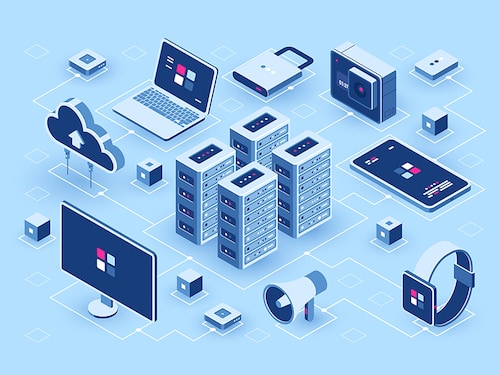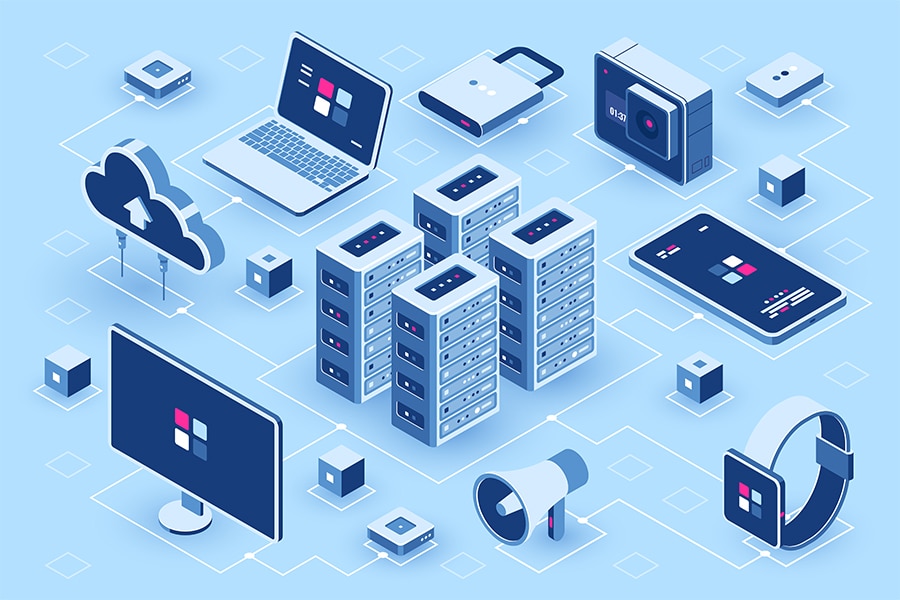Pivoting to Modern Day Data Centers In A Post Covid-19 World
The catapulting growth of Datacenters in India


 The pandemic has altered the way we do business and use technology. Businesses pivoted tactics to maintain not just a seamless movement of commerce but to take into consideration the government"s health rules to keep their staff safe, often making judgments without enough data.
The pandemic has altered the way we do business and use technology. Businesses pivoted tactics to maintain not just a seamless movement of commerce but to take into consideration the government"s health rules to keep their staff safe, often making judgments without enough data.
Businesses are experiencing a burst of information because of higher disruption and digital adoption. Because of the rising usage of cloud computing and technology trends, the Covid-19 pandemic has sped up the demand for IT infrastructure. The need for data centers with extreme scalability is increasing as more consumers and organizations use DC and cloud services.
To discuss the pivot of contemporary data centers post Covid-19, Forbes India presents ‘Data Centered’ powered by LEGRAND. The discussion moderated by Mr. Manu Balachandran, Assistant Editor at Forbes India comprises an esteemed panel of Mr. Sanjay Motwani, Business Head, Legrand Data Center Solutions, Mr. Ravinder Pal Singh, Partner, Kalaari Capital, Dr. Neeta Verma, DG, NIC, Mr. Ashok Singh, Executive Vice President and Head - IT Infrastructure Projects, Kotak Mahindra Bank Limited and Mr. Shiva Kumar RV, Deputy Chief Technology–Infrastructure, NPCI.
The catapulting growth of Datacenters in India
According to Research and Markets, the Indian Data Center market is predicted to increase at an 11.4 percent compound annual growth rate (CAGR) from USD 1.0 billion in 2018 to USD 1.5 billion in 2022. Deeper internet penetration, increase in digital data, public cloud services, and a significant increase in IoT are all major growth contributors.
Shedding light on the challenges faced by their business, Dr. Neeta Verma says, “During the lockdown, what enabled us to carry on our business was digital technology- be it interaction, communication, or e-procurement. Being a government body, we had to ensure providing remote working services. The demand for our video-conferencing service saw a massive surge. We had to scale our network and hand-hold people. Email and cloud services also saw an exponential demand. The shift from the untrusted network to a trusted network for the government was an enormous challenge. However, data centers were the reason we could make this happen."
Mr. Sanjay Motwani also sheds light on this topic. He said, “It’s been a learning curve for all of us. We had data centers, but the real challenge was meeting this exponential demand. The logistical issues- be it personnel or supply to these facilities. It was tough. The coordination had to happen at the global level. It forced us to be far more agile as an organization."
Mr. Ravinder Pal Singh also shares his thoughts on data center agility from the point of view of a venture capitalist. He said, “The tech and continuity part was easy. Across all domains, customers, regulators, and owners were unhappy. Three main pillars needed to be maintained, along with the flywheel of forming a newer economy.
The massive boom in digital payments
Mr. Shiva Kumar shares his views on the boom of digital payments. He said, “In such a situation, the payment instruments must be creative. There’s been an emergence of digital payments in the last few years, mainly UPI. Our competition is not an individual, an organization, or the people- it’s ‘cash’ and cash is king. But contactless payments make us stand today.
Mr. Ashok Singh also sheds light on these changes. He said, “Banks were prepared for such times. With IT enablement, it was possible to work remotely. The greatest fear was- How do we scale? But once technologies and cloud vendors were seeded, we could overcome this fear."
Optimizing the cost of cloud implementation and investment in data centers
Data centers and optimizing the cloud are the need of the hour today. Mr. Ashok Singh shares his insights by saying, “The cost of computers has significantly gone down. It’s the driving force behind economics- something that no one took seriously. There can be hurdles, but the creator economy will add tremendous value in India.
Building an efficient internal control network is essential to survive in this economy. Data consumption and generation have reached new heights, and the country"s demand for dependable data infrastructure is growing by the day. Cloud adoption, digital transformation, and social media usage, as well as new Industry 4.0 technologies like 5G, AI, and the Internet of Things, will continue to drive demand.
The pages slugged ‘Brand Connect’ are equivalent to advertisements and are not written and produced by Forbes India journalists.
First Published: Jan 28, 2022, 17:20
Subscribe Now